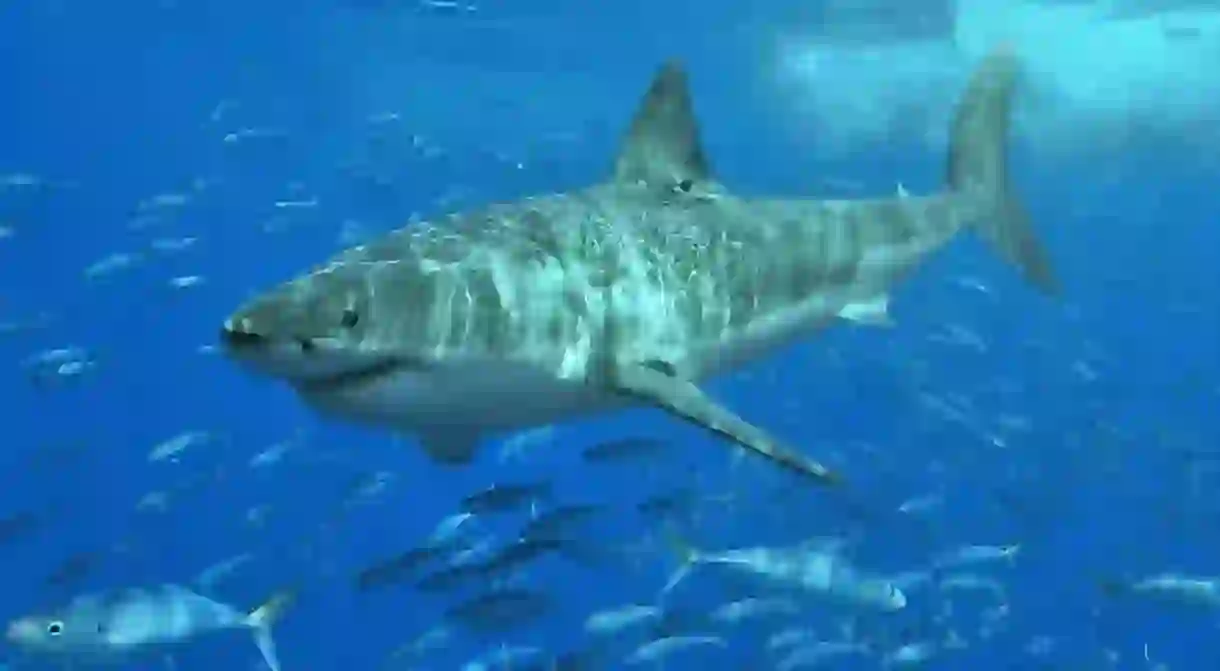11 Shark Species You May Spot in Australia's Oceans

There are more than 400 species of shark roaming the earth’s oceans, and just under half of those are found in Australia. Fancy a run-in with Jaws? Well these are the 11 shark species you’re most likely to spot in Australian waters.
Great white shark
Where else to start but the great white, the most feared apex predator in the ocean. The carcharodon carcharias grows up to six metres in length, making it the largest flesh-eating shark in the world, and it’s particularly fond of the cooler waters around Australia’s southern coastline, especially in Western Australia. Great whites commit most of the world’s shark attacks but more commonly feed on marine mammals like sea lions.

Tiger shark
The six-metre-long galeocerdo cuvier doesn’t look much like a tiger, but it’s every bit as fearsome, roaming both reefs and deep ocean in northern Australia. What a great white is to the cool waters down south, the tiger shark is to the tropics of the north, scavenging everything from whales and seals to stingrays and jellyfish.
Zebra shark
In fact, if any shark looks like a tiger, it’s this spotted 2.4m reef-dweller, whose markings are stripy when they’re young. The stegostoma fasciatum sticks to the tropical reefs of northern Australia, and is harmless to everything besides crustaceans and fish.

Bull shark
At 3.5m long, the carcharhinus leucas isn’t huge — but its strong snout, vice-like jaws and aggressive demeanour make its name appropriate. Bull sharks eat everything in their path — even other species of shark — and can even tolerate freshwater, meaning they’re capable of swimming up rivers to munch on dogs and horses.
Grey nurse
The 3m carcharias taurus is all bark and no bite, baring its huge, pointy, razor sharp fangs but rarely calling them into action … at least against humans. Grey nurses instead stick to the ocean floor all around Australia’s coastline, scavenging a variety of marine life.

Whale shark
Growing up to 14m long, the rhincodon typus is the largest fish on the face of the earth — but just because it’s big, doesn’t mean it’s brutal. Whale sharks are more interested in plankton and small fish than humans — in fact, you can swim alongside these marine behemoths in Ningaloo Reef in Western Australia, a once-in-a-lifetime snorkelling experience to tick off your bucket list.
Great hammerhead
The sphyrna mokarran is one of the most recognisable species of shark, with its distinctive head that — you guessed it — resembles a hammer. And the appearance isn’t just for decoration — roaming Australia’s northern coastline, the hammerhead enjoys a particular predilection for rays, pinning them to the ocean floor with the hammer then munching on their wings.

Port Jackson shark
The odd-looking heterodontus portusjacksoni is rarely longer than a human is tall, meaning these pig-nosed sharks pose no threat to humans, and barely even fish — their diet is limited to starfish, molluscs and sea cucumbers. Port Jackson sharks usually dwell in caves but occasionally migrate further, including an incident in October 2017 when one went for a dip in an ocean pool in Sydney.
Thresher shark
There’s no mistaking the five-metre-long alopias vulpinus, with its long skinny tail sticking up like a radio antenna on the back of a car. Threshers can breach out of the water like a dolphin, but don’t threaten humans in the tropical waters of the Kimberley, Top End and Queensland.

Pygmy shark
No prizes for guessing how this shark earned its name — the tiny little fella only grows up to a foot long, which needless to say, can’t do much damage to a human being. The euprotomicrus bispinatus resembles an anchovy more closely than a shark, and sticks to the deep ocean in warm West Australian waters during the day before popping up to the surface for a feed on small fish at night.
Wobbegong
This is the Australian name given to 12 species of carpet sharks (orectolobidae) found in the shallow tropical waters of far northern Australian. The name comes from an Indigenous word meaning ‘shaggy beard’, which pretty much tells the story of a shark that uses a patterned suit to blend into the ocean floor. The tasselled wobbegong is the most common species to Australia, feeding on fish and jellyfish.














